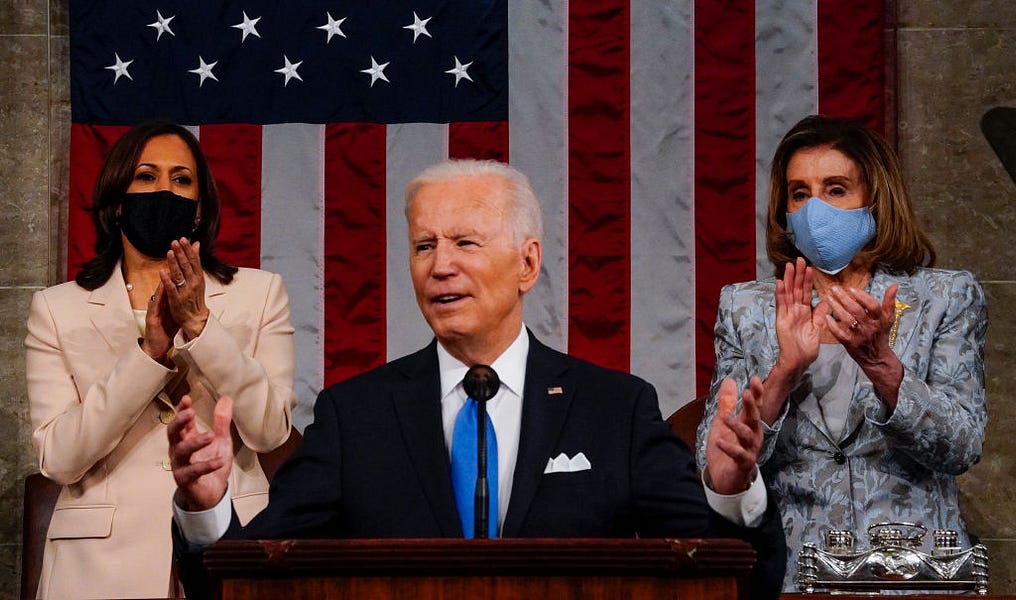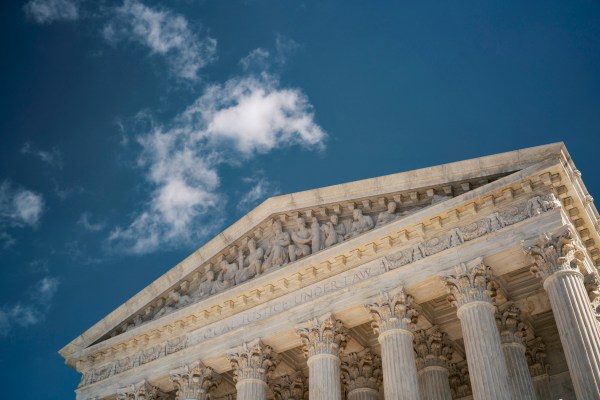The best way to gauge the success of American political movements is not by the depth to which they shape their native party, but the breadth to which they extend into the opposing side.
By that standard, the American conservative movement hit its lowest ebb in generations last week. Its success was so towering 25 years ago that Democratic President Bill Clinton embraced smaller government, free trade, welfare reform and fiscal discipline. Conservatism’s failure now is so abject that not only has a new Democratic president repudiated those concepts in his first address to Congress, but the Republican Party that for decades made itself synonymous with the conservative movement also increasingly rejects its core tenets. The tidal shift toward big, activist, progressive government that began even before the financial crisis of 2008 has washed over both parties and left conservatism lost at sea.
President Biden’s first-term agenda is indeed an audacious bet on the ability of the federal government to remake the way America lives and works, but it is also a reflection of how little regard both parties have for the conservatism that would thwart his plans. As has usually been the case, the best way to judge a movement is in its power to shape the other party.
Agrarian populists so thoroughly plowed under the post-Civil War Democratic Party that it would thrice nominate William Jennings Bryan for president despite successively weaker showings. Republicans never budged on the prairie populists’ major issues because they never had to. Compare that to the urban progressivism championed by Franklin Roosevelt. By the time Democrats yielded the White House in 1953 after two decades, Republicans had come to accept the core components of the New Deal. The crowning victory of progressivism came in the Eisenhower and Nixon administrations when Republican presidents ratified and in some respects expanded FDR’s approach to domestic policy.
There are as many ways to use the term “conservative” as there are for the term “liberal”—usually to similarly confusing effect. For our purposes, though, let’s understand “conservatism” as a political movement born in the early 20th century to combat the progressive surge that included Roosevelt, his cousin, Theodore, and Woodrow Wilson.
Conservatism’s early champions, like Presidents William H. Taft and Calvin Coolidge, were devoted to the idea of conserving the American system of a federal government with limited, divided powers. While progressives argued that America’s constitutional system was archaic and unsuitable to the industrial age, conservatives sought to restore the virtues of the Founding and its emphasis on individual liberty. The great traumas of the first half of that century—two world wars and an economic collapse—opened wide the way for big government and collective action. The complaints of the conservatives sounded cranky and antique. When the movement crashed and burned with Barry Goldwater’s 1964 presidential candidacy, conservatism was thoroughly discredited, even in the Republican Party in which it was born.
So complete was the victory of the progressive philosophy, though, that it would soon enough smother itself. The 1970s delivered a succession of punishing failures for advocates of big, activist government: The failure of the Vietnam War, energy shortages, crushing inflation, and economic malaise all argued strongly against the idea that Washington was a competent custodian of the powers deemed necessary for the progressive project. The corruption of the Nixon administration put an exclamation point on the argument against the centralization and expansion of federal power.
Conservatism, it turned out, wasn’t dead. It was quite busy sorting itself out—finding a way to make common cause with the right-wing culture warriors and the squishy moderates of the country-club-set. Aided by a shared hatred for Soviet communism, conservatives like Ronald Reagan and William F. Buckley built a new coalition with limited-government conservatism at its core. In his first inaugural address, Reagan summed up the movement this way: “From time to time, we have been tempted to believe that society has become too complex to be managed by self-rule, that government by an elite group is superior to government for, by, and of the people. But if no one among us is capable of governing himself, then who among us has the capacity to govern someone else?”
Fifteen years later, Clinton conceded the point and tried to merge conservative principles into the party that had for a century been so hostile to the movement’s aims: “We know big government does not have all the answers. We know there’s not a program for every problem. … The era of big government is over. … Self-reliance and teamwork are not opposing virtues; we must have both.” The first Democrat since FDR to serve two full terms was also the first from his party to fully acknowledge the merits of the conservative movement. Three successive electoral drubbings at the hands of Republicans running on conservative platforms had forced Democrats to see the world differently.
In the 20 years since Clinton left office, both parties have moved away from conservatism—at first in a trot and now in a full gallop. Whether it was the Wilsonian foreign policy of the Bush administration or the big spending and central planning of the Trump years, Republicans increasingly embraced the idea of an activist, powerful federal government. Democrats quickly forgot the humility about power Clinton had once expressed, bringing us to the moment where Biden seeks to complete the progressive agenda undertaken by the man he served as vice president, Barack Obama. Biden finds an opposition rooted not in conservative objections to big government itself but rather in a desire for its members to be the ones wielding the power.
In just 16 years after their 1964 defeat, conservatives retook the Republican Party and remade the American political mainstream—a movement that nearly equaled the success of the progressives whom the conservatives first gathered to oppose. But 25 years after reaching its apex, conservatism is so disdained that much of Biden’s central pitch—a massive list of new spending and federal programs he calls “a blue-collar blueprint to build America” that sounds right out of the 1960s and 1970s—could have been offered by either party.







Please note that we at The Dispatch hold ourselves, our work, and our commenters to a higher standard than other places on the internet. We welcome comments that foster genuine debate or discussion—including comments critical of us or our work—but responses that include ad hominem attacks on fellow Dispatch members or are intended to stoke fear and anger may be moderated.
With your membership, you only have the ability to comment on The Morning Dispatch articles. Consider upgrading to join the conversation everywhere.